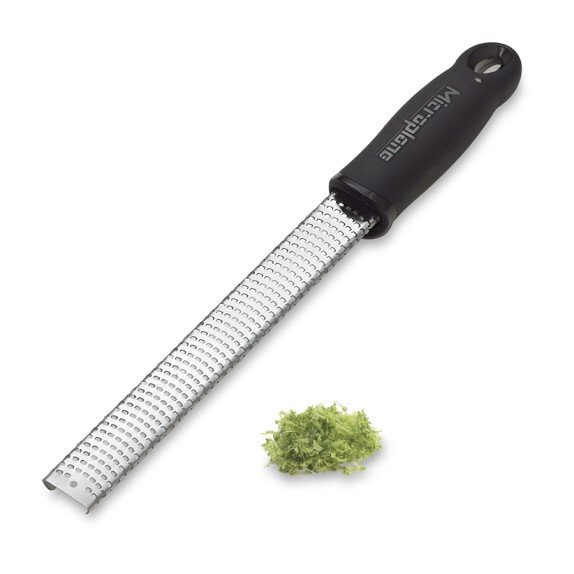By Mike Mattes - Inside Sales and Support at Boston Showcase Company
When it comes to deciding on tabletop items, the choices seem endless. From coupe plates and rocks glasses to soup bowls and saucers, these items are typically the primary focus when it comes to front of the house. However, flatware selection can often be treated with no more than a passing glance.
Yet when you really think about it, flatware is the item we engage with the most when enjoying a meal. While aesthetics and branding are an important part of any foodservice operation, functionality is just as vital. You wouldn’t serve someone a nice cabernet in a plastic tumbler, right? Therefore, you probably shouldn’t ask your patrons to consume their soup with a teaspoon either.
Here is a simple guide you can use when trying to determine the right flatware to purchase for your foodservice operation.
Forks
· Dinner Fork: Called upon to play a variety of roles, the dinner fork is one of the most popular and universal pieces of flatware. Longer than other forks (and most spoons), dinner forks are intended to be used for main entrees and meats. Due to their size and versatility, your guests can rely upon dinner forks to always be up to the task for any meal.
· European Dinner Fork: Sharing the same purpose as its American counterpart, European dinner forks are longer and denser. These are typically seen in fine-dining establishments or those that also host formal occasions and events.
· Salad Fork: Shorter and thinner than a dinner fork, the salad fork is a lightweight tool used to eat lighter foods and dishes. Their sharper and rounder tines allow for guests to easily pierce such items without completely damaging them. Outside of salads, salad forks are also great for sliced fruit or other leafy greens. Salad forks are often seen with three tines instead of four depending on the pattern.
· Cocktail Fork: For the very smallest meals and appetizers, cocktail forks are ideal. No more than 4-5 inches in length, these super light utensils are the perfect tool for picking up small items on a charcuterie board or delving into some oysters. (Though “snail” forks are made specifically for peeling small bits of meat from a shell, cocktail forks are a more versatile option that will still do the job very well.)
Spoons
· Teaspoon: Though the teaspoon is the most common spoon you’ll find, it is often asked to play too many roles. Teaspoons are ideal for consuming food in smaller bites, stirring coffee/tea and eating ice cream, for instance. Due to its narrow and shallow head, though, it does not allow guests to consume proper mouthfuls at a time, making it less ideal for soup or cereal.
· Soup/Bouillon Spoon: Especially for those with gourmet soups, specialty bowls, and liquid-based delicacies, a soup or bouillon spoon is absolutely essential. Besides a nominal difference in length, each type serves the same purpose. Both soup and bouillon spoons feature a wide, deep, and circular head that allows guests to enjoy their meal the way it was intended. No longer losing delicious ingredients or flavors that drop off smaller spoons, your clientele will be forever grateful.
· Dessert Spoon: Dessert spoons are quite similar to teaspoons. Only just slightly longer and similarly lightweight, the difference is that dessert spoons have a deeper, wider head. In truth, most teaspoons already work well for enjoying desserts, but dessert spoons are a slight step up in terms of both prestige and ergonomics.
· Demitasse Spoon: The smallest and lightest of spoons, the demitasse spoon is often the final piece of flatware one sees after enjoying a meal. Intended to stir small, hot beverages like espressos and cappuccinos, its deep bowl is great for scooping sugar, too. (Demitasse spoons also make for effective “serving” spoons on charcuterie boards or other small, ramekin-based appetizers.)
· Tablespoon/Serving Spoon: For shareable dishes, you should be providing tablespoons or serving spoons for your guests. Guests should never be expected to use the same utensil for communal food as they would for personal use. Furthermore, a longer handle and a wider, deeper head is perfect for scooping well-sized portions.
Knives
· Dinner Knife: Much like the dinner fork, the dinner knife is a staple of any foodservice operation. Its serrated blade allows for the easy cutting of most foods, including meats. More importantly, its long and sturdy handle ensures your guests can do so safely and effectively.
· European Dinner Knife: As with all European-style flatware, this knife is noticeably longer than a regular dinner knife (up to 35%). European dinner knives can also provide a bit more leverage, durability, and – above all – class to your establishment.
· Steak Knife: For those who specialize in steak and dense meats, a steak knife should be provided to all guests. Though dinner knives can get the job done, your guests will need to work harder to cut into thick pieces. With sharper and more refined teeth, steak knives are incredibly fast and efficient.
· Butter Knife: To start, butter knives are shorter than all other knives. More notably, their functionality is entirely different. While they can handle cutting some light fare, butter knives are NOT intended to cut food; they are intended to spread butter, condiments, jelly, or jam onto food. Moreover, they are much more delicate and will not rip or damage said food while spreading. (One can also choose to use “butter spreaders” instead. These are smaller versions of butter knives, whose sole purpose is to spread.)
Now that you understand the difference between the various types of flatware available, let’s delve into the materials that make up each utensil.
Stainless Steel vs. Silver
A common misconception is that all flatware can be referred to as “silverware.” However, while utensils made from silver used to be very commonplace, most commercial foodservice operators now choose to employ stainless steel flatware.
Due to its durability, corrosion-resistance, and ease of cleaning, stainless steel is incredibly reliable. It is also cheaper than silver, and it is always readily available. Made of a mix of common metals and alloys like chromium, nickel, and iron, stainless steel is one of the world’s most-trusted materials regardless of industry.
Fine-dining establishments may wish to also purchase silverware for certain times or events that call for a bit more elegance. In addition to its ability to produce an incredible shine, silverware usually features a beautiful design on its handle as well. The downfall is that silverware requires much more maintenance and extra care than stainless steel flatware ever will. Because silverware can rust over time, it cannot be washed in commercial dishwashers often. In addition, it needs to be polished regularly as well.
Types of Stainless Steel Flatware
Stainless steel flatware itself can also be broken down into four categories in terms of quality and composition:
· 18/10, 18/8, 18/0, 13/0
The grades refer to the percentage of chromium (first number) and nickel (second number) present in the flatware. Chromium is what makes stainless steel flatware strong, durable, and rust-resistant. Nickel strengthens as well but is more so used to boost sheen and give a nicer appearance.
As one might expect, the higher the grade the higher the cost. 18/8 offers the best balance amongst the grades. However, most high-volume establishments are happy to go with 18/0 or 13/0. Not only are these two easier on the budget, particularly for places that replace flatware often, but they are also magnetic. This characteristic can be helpful for those who use magnets to prevent items from accidentally being thrown away or misplaced.
By now, you should be all set to start choosing your flatware. Remember to be selective in your choices and think about your guests’ needs. Still, don’t forget to have fun with it, too! There is a whole word of flatware out there with so many unique styles, colors, and patterns to be explored. Hopefully this guide will serve you as great resource along the way.

















